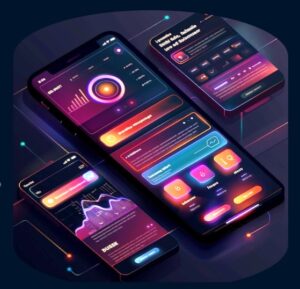The Importance of User Experience Design in Software Development
March 28, 2025

In the current digital environment, where competition is fierce and user expectations are constantly evolving, User Experience (UX) design has become a critical component of software development. A well-designed user experience not only enhances user satisfaction but also drives engagement, loyalty, and ultimately, business success. Let’s delve into the significance of UX in software development, explore current trends in mobile application design, and discuss how to effectively incorporate user feedback into the design process.
The Importance of UX in Software Development
Enhances Usability and Accessibility
At its core, UX design focuses on making software intuitive and easy to navigate. This enhances usability, allowing users to accomplish their tasks with minimal frustration. A seamless experience is particularly crucial for users with disabilities; thoughtful UX design can make software accessible to a broader audience, ensuring that everyone can benefit from the technology.
Increases User Engagement and Retention
A positive user experience directly correlates with user engagement. When users find an application easy and enjoyable to use, they are more likely to spend time on it and return to it regularly. This is especially important in a world where alternatives are just a click away. Companies that prioritize UX are more likely to cultivate a loyal user base.
Drives Business Success
Investing in UX design can lead to a significant return on investment. According to research, every dollar spent on UX can yield up to $100 in return. This is because a well-designed user experience can reduce development costs, lower support costs, and ultimately lead to increased sales. When users enjoy an application, they are more likely to recommend it to others, further expanding the user base.

Trends in UX Design for Mobile Applications
As technology continues to advance, so do the trends in UX design, particularly for mobile applications. Here are some key trends shaping the landscape:
Dark Mode
Dark mode has gained popularity due to its aesthetic appeal and ability to reduce eye strain in low-light environments. Designers are increasingly offering this feature as a standard option in mobile applications, allowing users to customize their experience.
Voice User Interface (VUI)
With the rise of smart speakers and voice assistants, integrating voice interactions into mobile applications is becoming common. VUI allows users to engage with apps hands-free, making them more accessible and convenient.
Microinteractions
Microinteractions are subtle animations or design elements that enhance the user experience. These small details, such as a button changing color when tapped or a loading spinner, provide feedback and guide users through their interactions, making the experience more engaging.
Personalization
Users are increasingly expecting personalized experiences. By utilizing data and machine learning, applications can offer tailored content, recommendations, and features that resonate with individual user preferences.
Augmented Reality (AR)
AR is transforming the way users interact with mobile applications, especially in industries like retail and gaming. By overlaying digital information onto the real world, AR creates immersive experiences that captivate users and provide additional context.

Incorporating User Feedback into the Design Process
User feedback is an invaluable resource in UX design. Here’s how to effectively integrate it into your design process:
Conduct User Research
Before launching a product, invest time in understanding your target audience through surveys, interviews, and usability testing. Gathering insights about their needs, preferences, and pain points will inform your design decisions.
Implement Iterative Design
Embrace an iterative design process where you continuously test and refine your designs based on user feedback. This approach allows you to make data-driven decisions, ensuring that the final product meets user expectations.
Create Feedback Loops
Incorporate mechanisms for users to provide feedback easily, such as in-app surveys, rating systems, or feedback buttons. This ongoing dialogue will help you identify areas for improvement and keep your application aligned with user needs.
Analyze Usage Data
Utilize analytics tools to monitor user behavior within your application. Understanding how users interact with different features can highlight usability issues and areas for enhancement.
Prioritize Changes Based on Feedback
Not all feedback will be feasible to implement. Prioritize changes based on user impact, feasibility, and alignment with business goals. This will help ensure that resources are allocated effectively.

User Experience (UX) design is no longer an afterthought in software development; it is a fundamental pillar that can make or break an application. By focusing on creating intuitive, engaging experiences, keeping up with emerging trends in mobile UX design, and actively incorporating user feedback, developers can create products that not only meet but exceed user expectations. As technology continues to evolve, prioritizing UX will remain essential for driving user satisfaction and achieving long-term business success.
Have Any Question?
Call or email Cocha. We can help with your cybersecurity needs!
- (281) 607-0616
- info@cochatechnology.com




